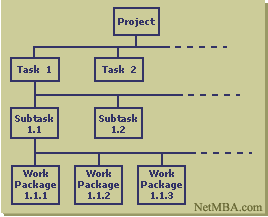1 = Actual responsibility
2 = General responsibility/ General Supervision
3 = Most be consulted
4 = May be consulted
5 = Must be notifies
6 = Must approve


“Management” (from Old French ménagement “the art of conducting, directing”, from Latin manu agere “to lead by the hand”) characterises the process of leading and directing all or part of an organization, often a business, through the deployment and manipulation of resources (human, financial, material, intellectual or intangible). …This management definition is interesting because it traces the root meaning back to the Latin phrase meaning “to lead by the hand”. (See management quotes for more perspectives.)Leading by the hand implies giving direction that is stronger than just a passing suggestion yet still fairly gentle in approach. Leading by the hand also implies that the person doing the leading is first going where the follower is being lead. The leader is not asking the follower to do something he is not willing to do himself.
en.wikipedia.org/wiki/Management
The guidance and control of action required to execute a program. Also, the individuals charged with the responsibility of conducting a program.This definition of management refers to a “program”. This implies that, for management to be effective, there needs to be some type of defined approach or system in place. This system becomes the plan and management is guiding others in following that plan. This is often the downfall of managers. They have no plan or system. As a result their actions seem random to the people they are managing and this leads to confusion and disappointment. This is why it is so important for business managers to have an employee manual. Without the employee manual providing direction, managers will struggle to be fair and balanced in their dealings with employees.
www.ojp.usdoj.gov/BJA/evaluation/glossary/glossary_m.htm
is the organizational process that includes strategic planning, setting; objectives, managing resources, deploying the human and financial assets needed to achieve objectives, and measuring results. Management also includes recording and storing facts and information for later use or for others within the organization. Management functions are not limited to managers and supervisors. Every member of the organization has some management and reporting functions as part of their job.This management definition is more in depth and tailored toward business management. Notice that it consists of three primary activities. First, management establishes a plan. This plan becomes the road map for what work is going to be done. Second, management allocates resources to implement the plan. Third, management measures the results to see how the end product compares with what was originally envisioned. Most management failings can be attributed to insufficient effort occurring in one of these three areas.
home.earthlink.net/~ddstuhlman/defin1.htm
is the activity of getting things done with the aid of people and other resources.This definition of management focus on management as the process of accomplishing work through the efforts of others. Skilled managers can accomplish much more through others than they can through their own single efforts.
wps.prenhall.com/wps/media/objects/213/218150/glossary.html
Effective utilization and coordination of resources such as capital, plant, materials, and labour to achieve defined objectives with maximum efficiency.This definition of management looks at not only the people but the entire range of resources necessary to follow a plan. Notice how it focuses on efficiency. Management isn’t just getting from point A to point B. It is getting there by choosing the best possible path.
www.ecbp.org/glossary.htm
1. The process of getting activities completed efficiently with and through other people; 2. The process of setting and achieving goals through the execution of five basic management functions: planning, organizing, staffing, directing, and controlling; that utilize human, financial, and material resources.The first definition looks at the fact that management is getting work done through other people. The second definition divides management up into five components. These components are all parts of the three components (plan, execute, measure) that we looked at above. However the more detailed definition helps show the activities that occur in each of the three phase definition.
www.crfonline.org/orc/glossary/m.html
The process of planning, leading, organizing and controlling people within a group in order to achieve goals; also used to mean the group of people who do this.Once again, this definition of management addresses accomplishing work through other people. This definition stresses the activities that are necessary for reaching particular goals.
www.booksites.net/download/chadwickbeech/Glossary.htm
the process of achieving the objectives of the business organization by bringing together human, physical, and financial resources in an optimum combination and making the best decision for the organization while taking into consideration its operating environment.This management definition talks about the different components that managers need to control in order to achieve objectives. One differentiator of this definition is the way it considers the operating environment as part of what a manager must understand.
www.ucs.mun.ca/~rsexty/business1000/glossary/M.htm
the role of conducting and supervising a business.This is a broad definition of management that doesn’t consider management as something that can take place outside of a business.
www.becbiz.com.au/glossary.htm